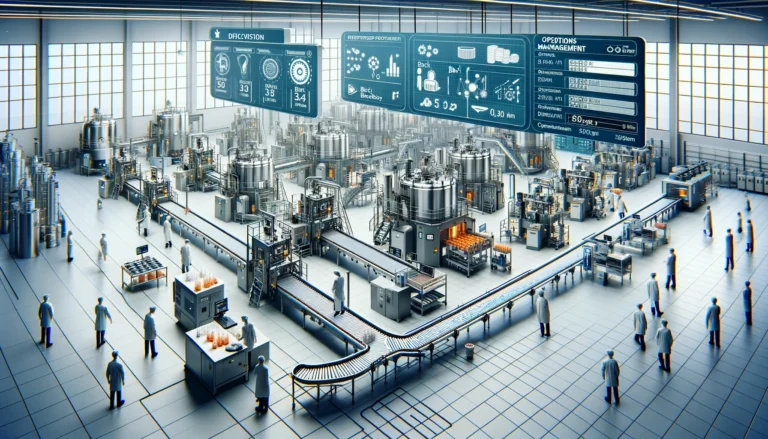- Used when demand is higher and more regular.
- Production consists of a number of operations.
- Products are produced in “batches”.
- Appropriate for manufacturing businesses.
Advantages
- Flexibility: each batch can be altered to meet customers’ wishes.
- Skilled workers are not needed, which decreases costs.
- Machinery is more standardised, also decreases costs.
- Firms can respond quickly to changes in demand.
Disadvantages
- Machinery could be more complex to compensate for the lower skill levels required from the workers.
- The workforce is less motivated.
- Money will be tied up in work-in-progress, since an order cannot be dispatched until the whole batch has been finished.
Batch production represents a significant manufacturing methodology designed for producing goods in batches or sets. Unlike continuous production, which focuses on a single product line 24/7, batch production allows manufacturers to produce different products using the same equipment and production line. This method is particularly effective for medium-scale production where the demand for products is variable or where customization is required. This analysis delves into the batch production process, highlighting its flexibility, advantages, and industry-specific applications.
Definition and Core Characteristics
Batch production involves manufacturing a group of identical products. The production run for a batch can vary from a few units to thousands, depending on the demand and capacity. Once a batch is completed, the equipment is cleaned, reconfigured, or reset for the next batch, potentially of a different product. This method strikes a balance between the bespoke nature of job production and the high-volume efficiency of flow production.
Key Components of Batch Production
- Flexibility: Allows for the production of different products on the same production line.
- Scalability: Production can be scaled up or down based on demand without significant cost increases.
- Customization: Facilitates customization for specific customer requirements within each batch.
Advantages of Batch Production
- Versatility: Suitable for a variety of products without needing separate production lines.
- Cost-Effectiveness: Reduces initial setup costs, as the same machinery can produce different products.
- Inventory Management: Enables better inventory control, reducing storage costs by producing goods in response to demand.
Challenges in Batch Production
- Production Planning: Requires meticulous planning to schedule batches, manage inventory, and ensure efficient workflow.
- Equipment Downtime: Transition between batches can lead to downtime, affecting overall productivity.
- Quality Consistency: Maintaining consistent quality across batches can be challenging, especially when switching production lines for different products.
Real-World Application: The Bakery Industry
The bakery industry exemplifies batch production efficiency. Bakeries often produce a variety of bread, pastries, and other baked goods in specific quantities based on demand. For example, a bakery might produce a batch of sourdough bread in the morning, followed by croissants, and then specialty cakes. The equipment is cleaned and reconfigured between batches to accommodate different recipes and baking temperatures. This allows bakeries to offer a wide range of products using the same kitchen facilities, catering to diverse customer preferences while optimizing production costs.
Technological Integration in Batch Production
Advancements in manufacturing technology have significantly impacted batch production. Automated systems and software for production planning and inventory management have streamlined the process, reducing downtime and enhancing efficiency. Robotics and AI have also been integrated into batch production lines, improving precision and flexibility in manufacturing processes. These technological integrations enable manufacturers to quickly switch between product batches, minimize human error, and maintain high-quality standards.
Environmental and Sustainability Considerations
Batch production offers opportunities for sustainable manufacturing practices. By producing goods in response to demand, manufacturers can minimize waste and manage resources more effectively. Additionally, the ability to produce multiple products on the same line reduces the need for extensive machinery and equipment, lowering the environmental footprint of manufacturing operations.
Future Perspectives
The future of batch production lies in its integration with digital technologies and lean manufacturing principles. The adoption of Industry 4.0 technologies, such as the Internet of Things (IoT), big data analytics, and cloud computing, will further enhance the efficiency and adaptability of batch production methods. Manufacturers who embrace these advancements will be better positioned to respond to market changes, customize products, and sustainably meet consumer demands.
Conclusion
Batch production remains a vital manufacturing methodology, offering flexibility, efficiency, and customization capabilities across various industries. By balancing the need for diverse product offerings with the demands of cost-effective production, batch production supports the dynamic needs of modern markets. As technological advancements continue to evolve, the potential for batch production to contribute to innovative, sustainable, and responsive manufacturing practices is immense.

